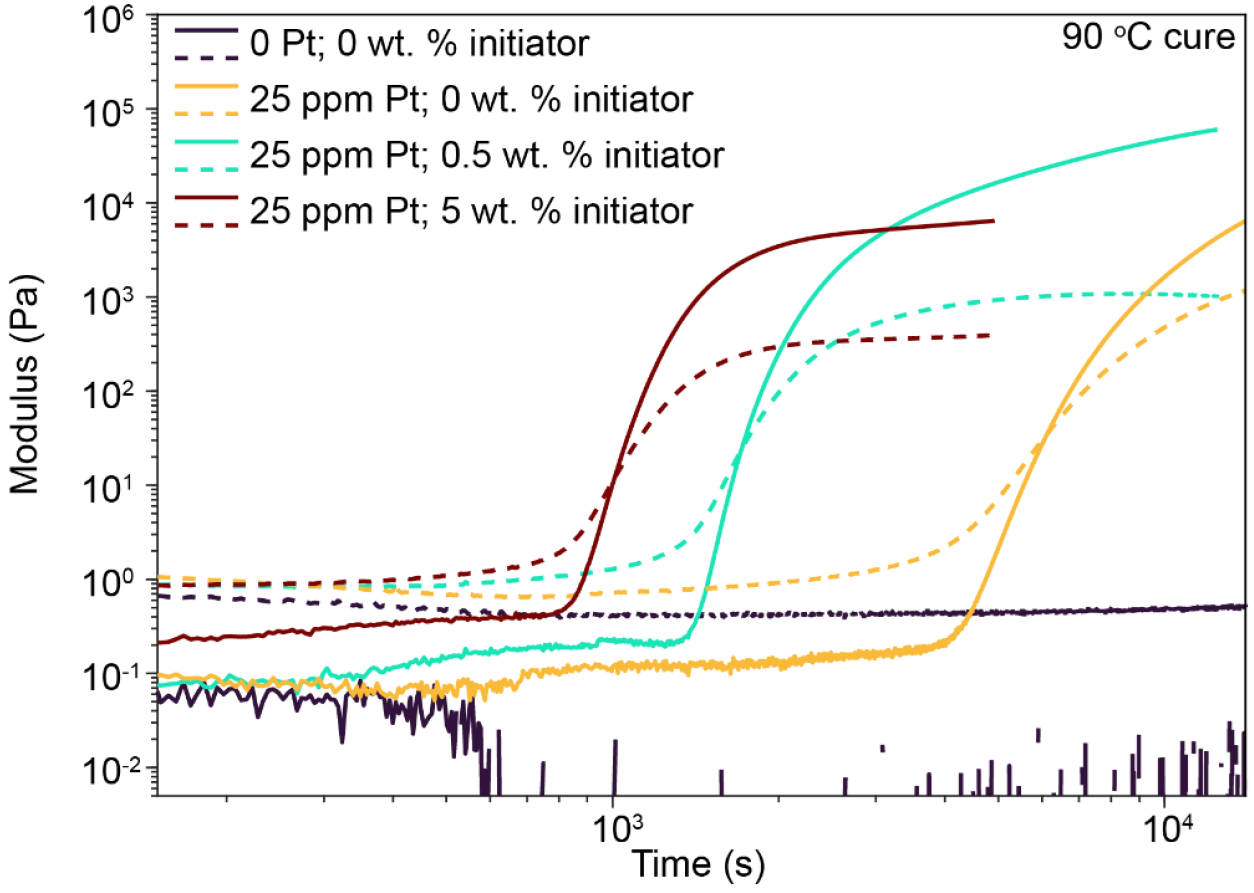Polysiloxane, or silicon polymer, is an inorganic polymer that does not contain carbon atoms in its backbone. It is inherently resistant to temperature, ultraviolet light and oxidation and is used as a coating binder in polymer coatings. Its popularity is driven by the increasing use of protective and industrial coatings, by vast applications in the healthcare industry, and by augmenting usage in optoelectronic applications. This invention provides a way to control the formulation in order to tune the mechanical properties of useful rubbers for a variety of applications.
The approach is to use peroxides to modify the reaction kinetics in the production of polysiloxanes. A radical initiator in the presence of a hydride-terminated polysiloxane will increase the rate of curing and reduce manufacturing costs. At a minimum a formulation would contain a hydride-terminated polysiloxane, a platinum catalyst, and an initiator that generates radicals. The content of the initiator affects the curing time; more initiator cures more quickly.
- Value Proposition: Reduced manufacturing costs while maintaining same performance.
- Ability to control curing kinetics and resulting network structures of polysiloxanes.
- Ability to create recipes that result in products having desired properties.
- Industrial coatings industry
- Medical device industry
- Optoelectronics industry
Current stage of technology development: TRL 2 (Technology concept and application formulated)
LLNL has filed for patent protection on this invention. LLNL also has a huge portfolio of manufacturing silicone and siloxanes that can be tailored to the needs of the desired application.


